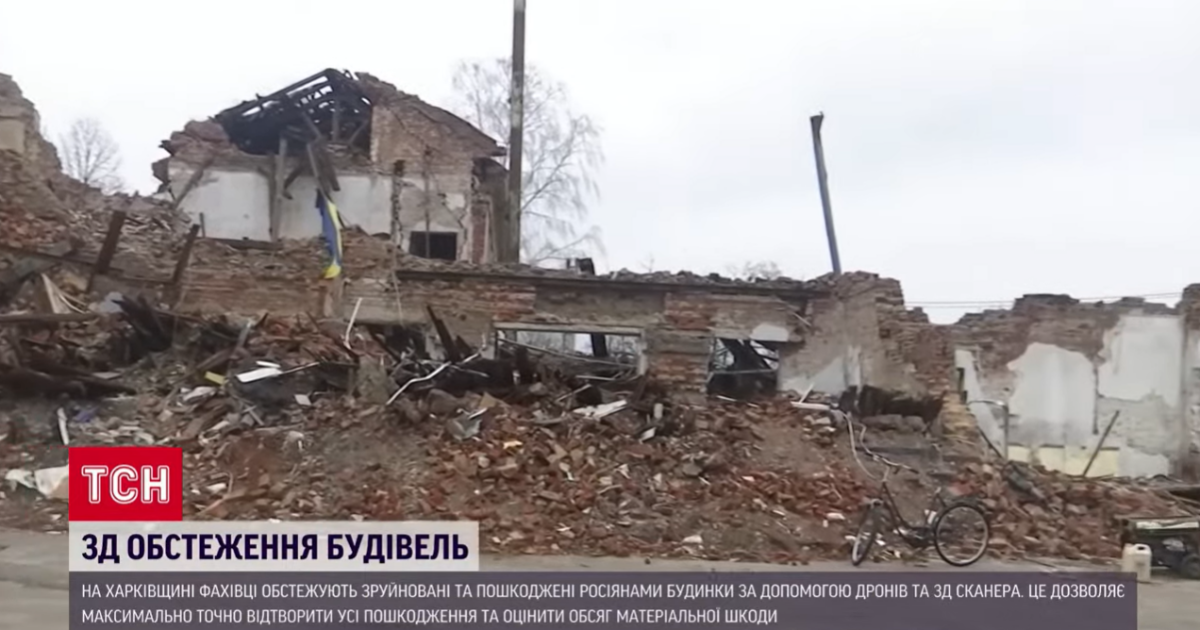Experts have already examined more than 16,000 destroyed buildings in Kharkiv region.
Residential buildings, schools, and architectural monuments destroyed by the Russians during the bombing are being studied from the air using a drone by specialists from the Institute of Forensic Examinations.
With the help of a 3D scanner, the building is examined from the inside, and in this way, the real amount of material damage, as well as the type of projectile and even where it was launched from, are established, TSN reports.
A pile of bricks, burnt ceilings, and a Ukrainian flag flying above it - all that remained of the Merefyansk Lyceum after a Russian shell hit it.
The director Ms. Tamara tearfully remembers the day when the Russians destroyed her Lyceum.
"Graduates who graduated from school 50-60 years ago came, but they stood here and just sobbed on these ruins.
And they also rushed to help us.
The walls were falling.
The ceilings collapsed.
It was extremely terrible and scary," she says.
Immediately after being hit, the woman and her colleagues immediately rushed to pull school documents out of the flames.
Meanwhile, the building crumbled before our eyes.
"Only a part survived, where there was a library and three classrooms.
Through the windows we pulled out what we could - all the textbooks.
We saved about 70 percent," says the director.
Notebooks, window curtains, and remnants of furniture can still be seen among the debris.
Everything is carefully examined by experts from the Institute of Forensic Examinations.
From the air, the building is examined with the help of a drone, and from the inside, under the debris, where a person cannot get, everything is captured by a 3D scanner.
This will allow from 1 to 7 millimeters to see the entire structure.
Based on this data, the building model will be reproduced on the computer and all damages will be determined.
They will be able to determine which munition caused the destruction and even from where it was launched.
"Rockets penetrate more into the foundation of the building and deepen.
For example, it can be 2-3 to 5 meters deep.
If the bomb is high-explosive, then the nature of the damage is different.
It explodes on the surface of the building," says forensic expert Vladyslav Khodorych.
The computer will be able to see every crack in the wall and every brick to assess the damage.
This will then become another piece of evidence in court against Russia.
During the year of the invasion, experts have already examined 16,000 destroyed buildings in the Kharkiv region.
The case is progressing faster since the specialists received a 3D scanner.
"As it used to be - roulette, laser roulette and walking around the building.
If it were on this building, the experts would probably work for several days, but we worked for almost 2 hours," experts say.
"We inspect residential buildings, apartments, public infrastructure facilities, office buildings.
The greatest damage was caused to the object - it is 155 million hryvnias", the researchers add.
The examination is carried out even a year after the hit.
The main thing, experts say, is to draw up a deed of destruction in time.
Then the research will be conducted taking into account weather conditions - rain and snow.
Read also:
The unexpected result of the elections in Montenegro may change the support of Ukraine in the war and affect the whole of Europe
The Russians "marked" the arrival of the Chinese president by opening a criminal case against the judges of the International Criminal Court
At the front, they are collecting evidence of the enemy's use of chemical weapons: the Russians are flaunting the violation of the rules of war on their TV
